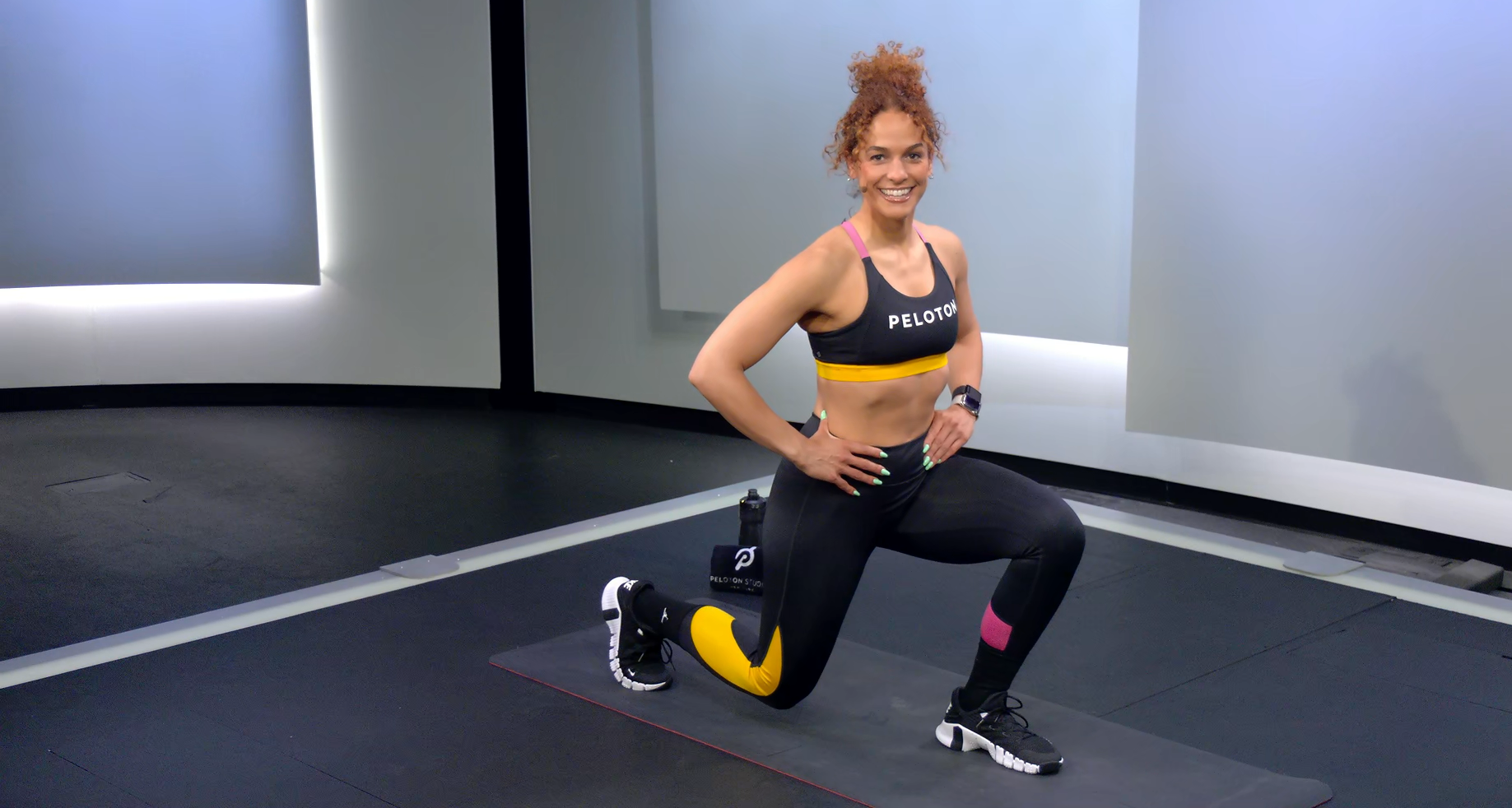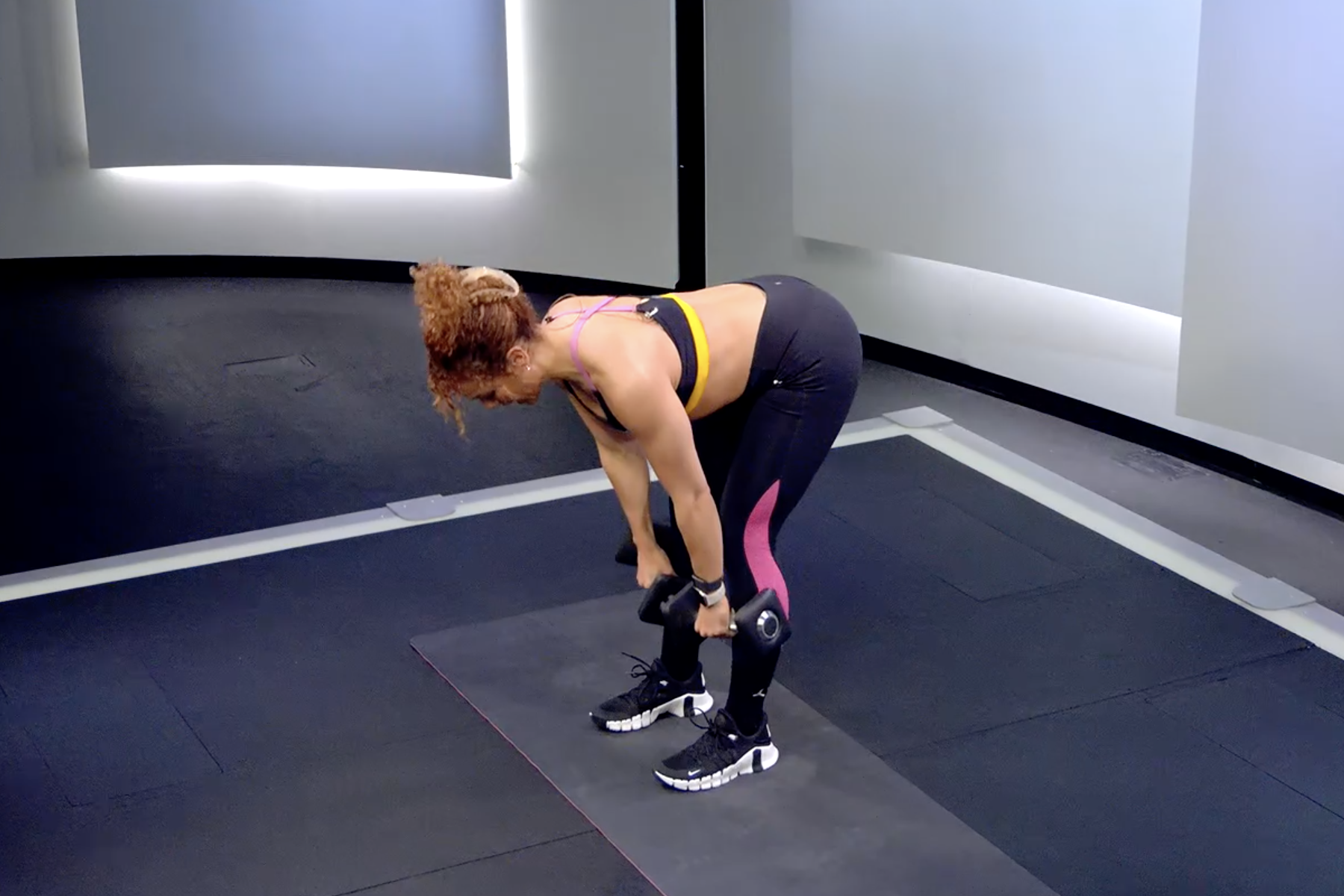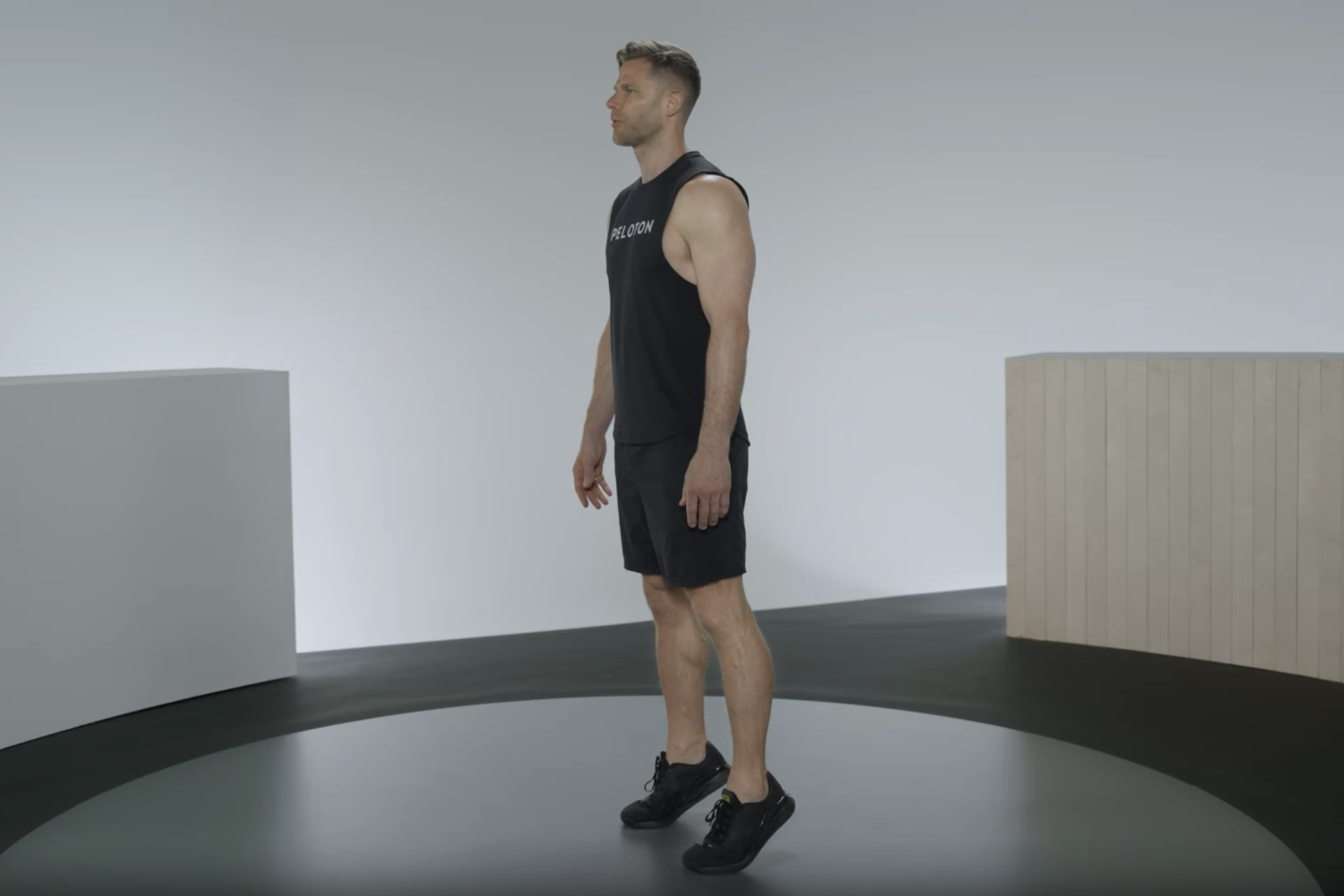
©Studio Firma/ Stocksy United
Need a Beginner-Friendly Leg Workout? Try These 6 Expert-Recommend Exercises
It's time to work your lower body.
By Karla Walsh•
The Benefits of Leg Exercises for Beginners
What Muscles Do Leg Exercises Work?
How to Test Your Leg Strength
6 of the Best Leg Exercises for Beginners
When was the last time you thanked your legs for all they do? While they might not get as much time in the spotlight as our hair or skin, our legs make our daily activities possible. They lift us up out of bed in the morning, carry us up (and down) the stairs, and power us through our workouts. As it turns out, “getting a leg up” is a very apt saying in more ways than one.
“Our legs are our primary mode of mobility,” says Leo Arguelles, clinical assistant professor of physical therapy at the University of Illinois Chicago and spokesperson for the American Physical Therapy Association. “Our leg muscles are some of the biggest in our body.”
If we neglect our leg muscles, our endurance will suffer, we’ll burn less energy, and, most importantly, “our ability to participate in daily tasks takes a huge hit,” he adds.
The Benefits of Leg Exercises for Beginners
According to Christopher Bailey, a physical therapist and the owner of multiple FYZICAL Therapy & Balance Centers in Pennsylvania, many individuals believe that simply walking is enough to gain the muscle strength our bodies need to maintain optimal body function as we age.
“Walking is undoubtedly important, but it fails to work some key leg muscles, including your quads and glutes, at the level these muscles need to stay strong,” he says. “It’s important to incorporate functional strengthening into our weekly exercise routine to begin building strength.” This is especially true when it comes to aging. Generally, people tend to become less active as they age. As a result, we start to lose strength in our 50s and 60s, specifically in our leg and glute muscles, Bailey says.
“As we get older, our muscle volume starts to decrease and that makes us more injury-prone,” says Peloton instructor Jess Sims. “It’s important to strengthen your legs as well as work on your mobility.” To lower the risk for falls, injuries, and for better quality of life, she advises focusing on your ankle mobility and knee stability. Enter: targeted leg exercises.
According to our panel of fitness pros, the benefits of leg exercises include:
Preventing injuries
Improving your balance and increasing the ability to navigate diverse terrain
Maintaining or building strength
Increasing your endurance
Contributing to your metabolic rate
Supporting your ability to stay independent longer throughout your lifespan
What Muscles Do Leg Exercises Work?
Your legs are made up of several different muscle groups, many of which you’ve probably heard instructors refer to during workout classes. Here’s a refresher, working from your ankles up:
Plantar flexors (calf muscles): This is a group of two muscles that connect behind your knee, attach to your Achilles’ tendon, and continue on to your heel bone, Bailey says. Your calves propel your body forward while walking and make it possible to go up on your tiptoes.
Dorsiflexors: Located in your lower leg, these muscles start at the front of your shin bone and attach to the top of your foot. “They help to pull our toes up when we walk to help us avoid tripping and provide stability for our feet and ankles,” Bailey says.
Quads (knee extensors): These are the four main muscles in the front of your thigh, which start in your hip and upper leg bone and attach to your lower leg bones (tibia) through the knee cap. This muscle group deserves major credit for helping you climb stairs and safely sit down in a chair. Your quads also help you kick the lower portion of your leg straight when swimming or sitting on a swing set. “Weak quads can also lead to knee pain because they are the main muscles that support the knee joint,” Bailey says.
Hamstrings (knee flexors): On the opposite side of your upper legs lie your hamstrings, which originate at the back of your hips and extend to the lower leg bone behind your knee. These big muscles help you propel forward while walking and lift objects when your legs are straight, such as during a deadlift.
Hip flexors (iliopsoas): Your lower back, pelvis, and upper leg bone are connected by these powerful “pullers.” Your hip flexors lift your knees up when going up stairs, stepping into a car, or pedaling forward on a bike. If you’re an avid rider, you’ll want to pay special attention to these muscles. “If your primary exercise is riding a bike, you may notice that these muscles tend to become tight and are prone to injury,” Bailey says. “This is because when riding a bike, these muscles are in a shortened position, often for a long time. Stretching these muscles will help keep them long and strong.”
Glutes (hip extensors/abductors): Your glute muscles play a crucial role in stabilizing your legs while standing, squatting, or doing isometric movements. These muscles originate on the back of your pelvis and attach to different parts of your upper leg bone. “This group of muscles tends to weaken faster than any other group as we age,” Bailey says.
Related Articles

Strength Train
Why Isolation Exercises Should Play a Supporting Role In Your Strength Routine

Beginners
Should You Do Cardio or Weights First? An Expert Weighs In

Strength Train
Why a Proper Hip Hinge Is Critical to Nailing Your Workouts

Beginners
A Beginner’s Guide to the Gym: How to Feel Confident from Day 1
How to Test Your Leg Strength
If you’re unsure if you might benefit from incorporating more leg-strengthening exercises into your routine, Bailey recommends trying a 30-second sit-to-stand test. Here’s how to do it:
Sit in the middle center of a chair (that has sturdy legs, not wheels).
Place your right hand on your left shoulder and your left hand on your right shoulder, crossing at the wrists to make an “X” across your chest.
Keep your feet flat on the floor, back straight, and arms against your chest. Rise to a standing position, then return to sitting.
Repeat this as many times as possible for 30 seconds straight, counting your reps.
At the end of the test, evaluate your rep count. If you completed less than 10 reps in the set time, Bailey recommends adding more leg-strengthening exercises into your training regimen.
6 of the Best Leg Exercises for Beginners
The best leg exercises for beginners focus on stability and control. From there, you can progress to adding more resistance, then to more dynamic, total-body exercises (such as dumbbell thrusters, push presses, renegade rows, and cleans) or moves that challenge a single leg at a time or involve jumping (ahem, burpees).
Start with this six-move starter pack to build leg muscle strength.
1. Sit-to-Stand
Sit in the center of a chair (that has sturdy legs, not wheels).
Place your right hand on your left shoulder and your left hand on your right shoulder, crossing at your wrists to make an “X” across your chest.
Keeping your feet flat on the floor, back straight, and arms against your chest, shift your weight to your feet to rise out of the chair. Engage your lower body and core muscles.
Slowly lower your body back onto the chair’s edge like you’re squatting.
Repeat for 10 to 15 reps.
To make it easier, use your hands for support or raise the height of the chair.
2. Step-Ups
Stand in front of a stair, with both feet planted on the ground about hip-width apart.
Step your right foot up onto the stair, then bring your left up to meet it.
Step your right foot back down with control, followed by your left.
Repeat this pattern for 10 to 15 reps.
To make it easier, opt for a shorter step, and if needed, place your hand on a wall or railing for support.
3. Lateral Band Walk
Place a light resistance band loop just above your ankles.
With your feet hip-width apart and knees slightly bent, take 10 to 15 slow, controlled, lateral steps to the left. Pause.
Take 10 to 15 slow, controlled, lateral steps back to the right to return to the starting position.
To make it easier, use a lighter resistance band, or place it just above your knees rather than at your ankles.

4. Lunges
Stand with your feet about hip-width apart. Engage your core.
Step your right foot forward. Keeping your feet hip-width apart, bend your knees so both legs form a 90-degree angle and your front thigh is parallel to the floor. (Make sure your right knee doesn’t go past your toes.)
Pause briefly, then press through your right foot and squeeze your glutes to step back to the starting position.
Repeat on the left side.
Complete 10 to 15 reps.
To make it easier, focus on one leg at a time rather than alternating, and place your hand on a wall for balance.

5. Deadlifts
Stand with your feet about hip-width apart and knees slightly bent.
Place your arms in front of your thighs. Keeping your chest lifted and open, engage your core and glutes.
Hinge at your hips. Push your glutes behind you. Maintain good posture, keeping a slight bend in your knees. Engage your core and lift your chest.
With straight arms, lower your hands to your shins, as if you’re going to touch your toes. Pause briefly when your fingers reach the midpoint of your shins (or as far as you can go while maintaining good posture).
Press through your heels, and reverse the hip hinge motion, using your glutes and hamstrings to stand back up to the starting position.
Repeat for 10 to 15 reps.
To make it easier, decrease your range of motion.

6. Calf Raises
Stand with your feet hip-width apart.
Press through the balls of your feet to lift up both heels.
Slowly lower your heels back down with control.
Repeat for 10 to 15 reps. To make it easier, hold onto a steady object for stability.
To make any of these moves more challenging, add dumbbells or a kettlebell.
How to Fit Leg Exercises Into Your Workout Regimen
The ideal number of sets and reps depend on your current level of fitness. As a general rule, Arguelles recommends aiming for two to three sets of 10 to 15 reps of each exercise two or three times a week, with a rest day in between. If you can fly through 15 to 20 reps, it may be time to add more resistance, he adds.
And don’t underestimate the power of other workouts in building your leg strength. “Exercises like Peloton rides and runs can significantly improve glute and leg muscle strength as well, specifically the quadriceps, gluteus maximus, and the tibialis anterior,” Bailey adds.

Peloton App
Access thousands of classes with no equipment needed.
This content is for informational and educational purposes only and does not constitute individualized advice. It is not intended to replace professional medical evaluation, diagnosis, or treatment. Seek the advice of your physician for questions you may have regarding your health or a medical condition. If you are having a medical emergency, call your physician or 911 immediately.
Move your fitness journey forward
Enter your email to get articles, motivating tips, and updates from Peloton sent to your inbox.
By providing your email address, you agree to receive marketing communications from Peloton.
For more about how we use your information, see our Privacy Policy.





